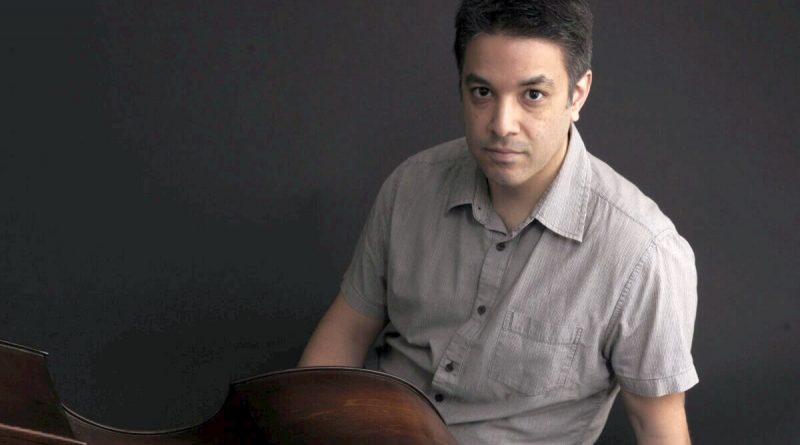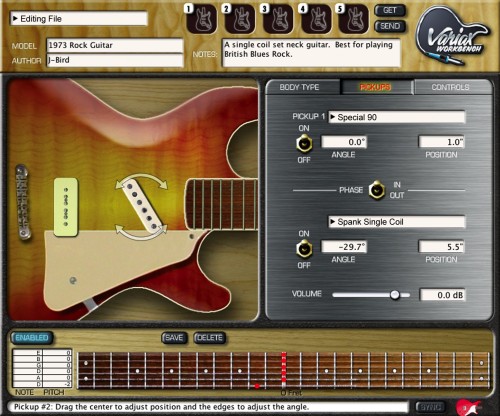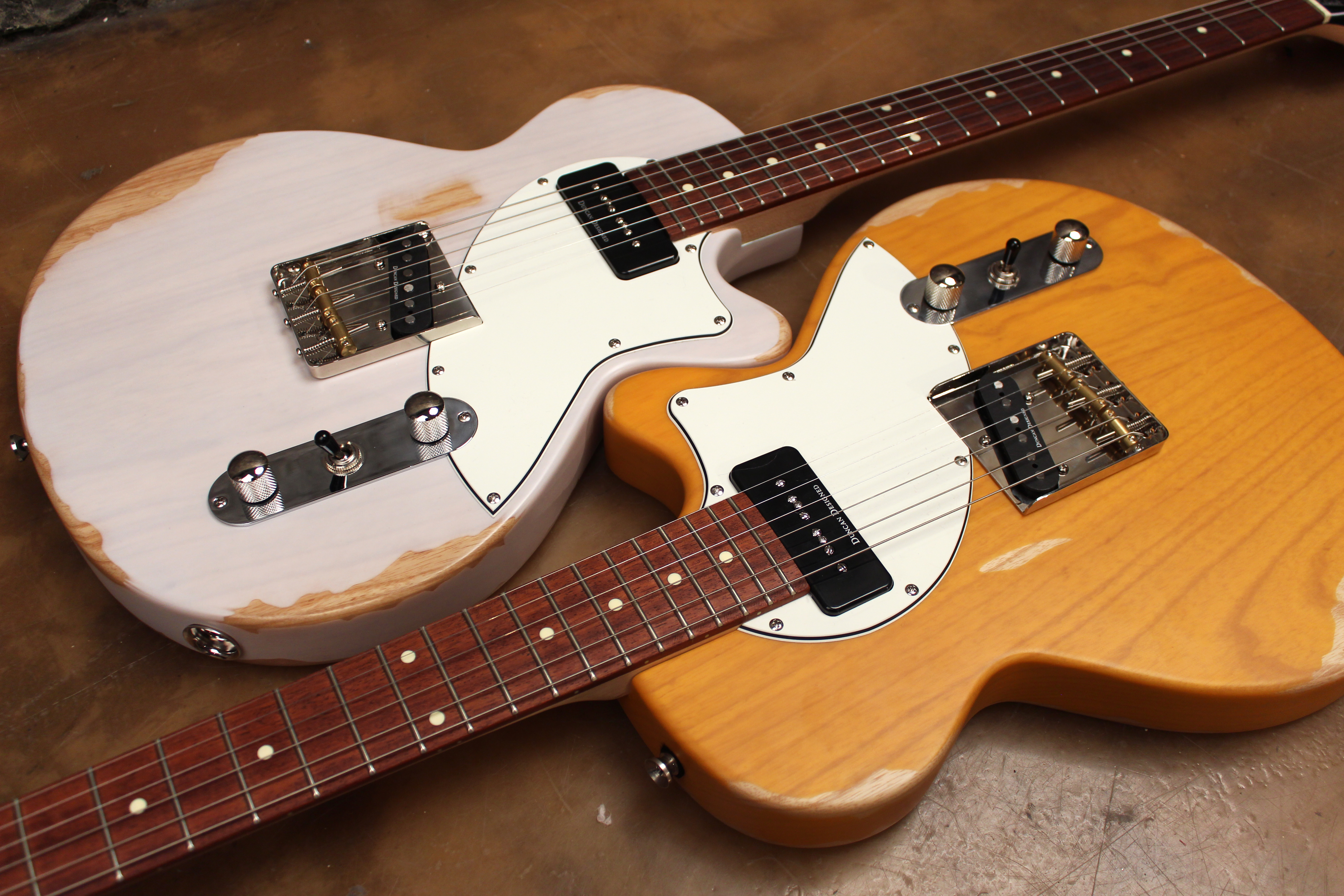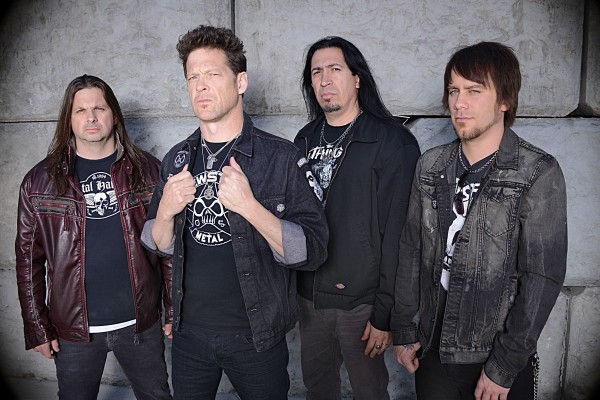Bob Gingery – bassist (interview)
Originally from the San Francisco Bay Area, the bassist began his musical career with the saxophone. Today, a well-respected educator (teaching at Concordia Conservatory in Bronxville, NY and the Brearley School in NYC), but also an artist who has performed with some of the best musicians in NYC, he tours and records both as a sideman and bandleader. After an enthusiastically acclaimed debut album „Traveler” (2014) with very favorable reviews in magazines like e.g. DownBeat, four years later he released the equally excellent „Kittyhawk”. In December 2021, Bob Gingery, Brian Woodruff (drums) and Takeshi Asai (piano) met at Takeshi’s New York studio for a recording session for the Japanese-born pianist and composer’s latest album.
What was your beginning of your musical career like and how did it happen that you changed the saxophone for a bass guitar, and then a double bass?
Bob Gingery: I began playing saxophone at 10 years old, mostly because a friend of mine played sax in the school band. I started on alto, but switched to tenor and then baritone sax. I guess I was drawn to the low notes early on. I convinced my friend to switch to bari as well giving the small concert band a nice big bottom. Our band nerd joke was to play the horn riff to Run DMC’s „You Be Illin'” randomly in the middle of band class. We were so bad! I remember reading the liner notes from cassette tapes I had from new wave bands in the 80’s. I was curious about the different instruments and wanting to be a part of that. In high school I started playing bass guitar in the school jazz band and local rock bands with friends. Later I began studying upright bass and made that my life. I started playing a lot while in school at Chico State University in California. Roger Hogan, who played with Dizzy Gillespe, was there and helped me early on by giving me gigs and advice. Then Boston and Berklee, again playing as much as I could. When I was there I think there were something like 60 upright bassist and 1000 guitarist, so there was no shortage of opportunities to play. There were a few clubs around too, Wally’s was a great hang back then. I moved to New York in 1999 and was gigging right away. At City College I studied with Ron Carter for two years. That really changed my playing. He’s a great teacher, as passionate and serious about teaching as he is about playing.
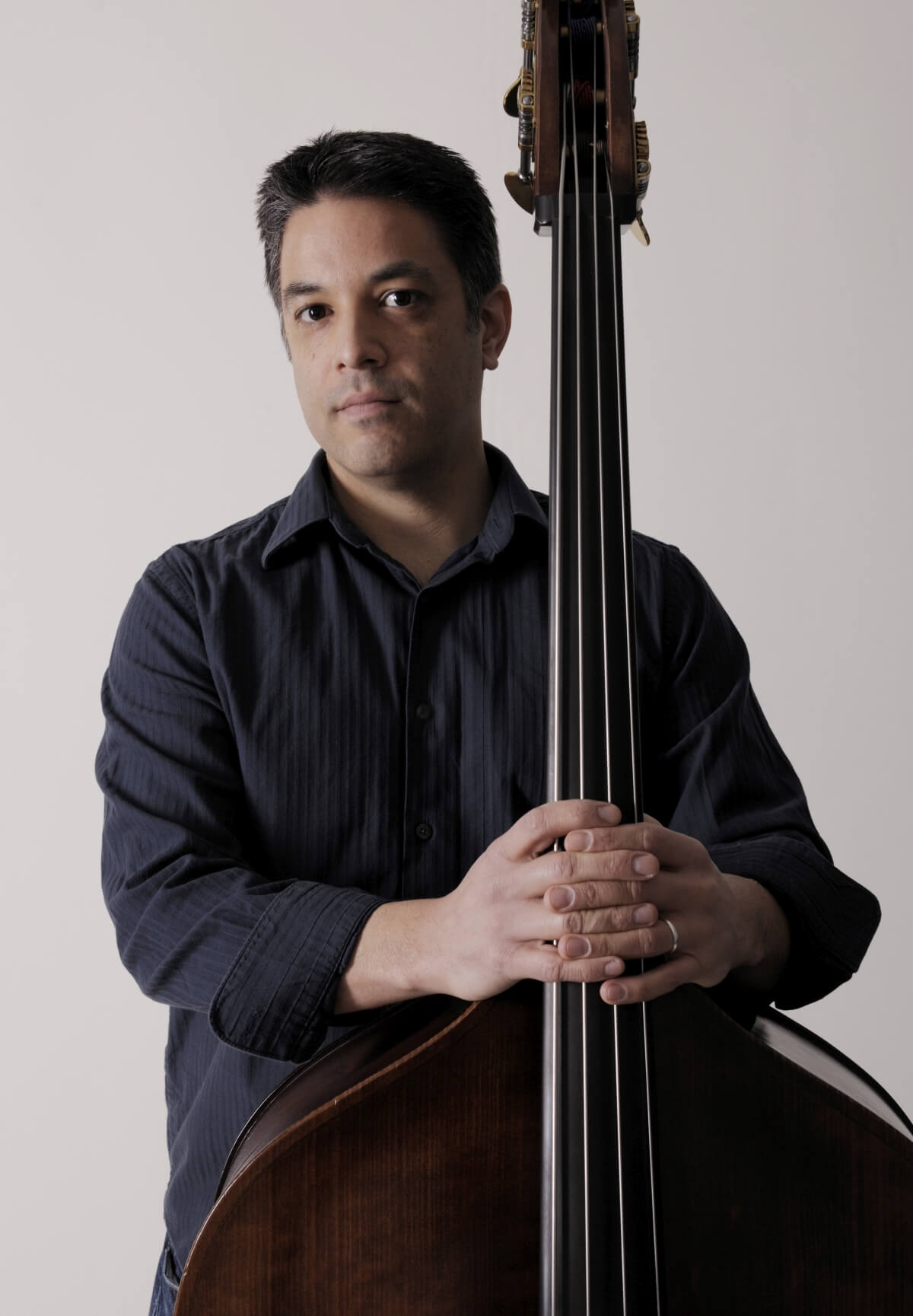
You haven’t always been strongly associated with jazz, as far as I know. You started as a bassist in some rock bands and even now – you play many styles of music like jazz, rock, pop, R&B, latin, musicals and symphony orchestras. What do you find in music more important than just a genre itself?
Bob Gingery: Jazz has always been a part of my growth as a musician. My early lessons on bass guitar were jazz based, learning harmony by studying standards and such. To play upright bass it’s important to have a well thought out approach to technique which comes from studying classical music. I’ve always had an open mind when it comes to styles of music. Even early on I would listen to everything. I still like playing it all as well, as long as it’s good, as long as there is emotion and feeling in the music. I can enjoy playing a simple well crafted pop tune or complex jazz, I practice classical music every day, I have a regular session playing this heavy jazz fusion stuff, it’s all good! I’m lucky to live in New York and play with some great musicians. That’s what’s most inspiring to me.
Do you still happen sometime to reach for the bass guitar? Do you prefer to be called a bassist or do you to make it clear that you are a double bass player?
Bob Gingery: I love playing bass guitar and do it every chance I get! I practice both upright and electric bass regularly and try to keep my chops together on both. I love playing pop, funk, rock, all that stuff on electric. I’d like to play more jazz on the electric bass, but there doesn’t seem to be much demand for that. I’m a big Steve Swallow fan, who plays bass guitar exclusively in a jazz context, and has played with some of my favorite band leaders. There’s a lot of great electric bass players out there but they don’t seem to get called for the high profile jazz gigs, at least not the music that I’m interested in. For my own music I usually hear the upright bass, so I can understand the desire for that sound.
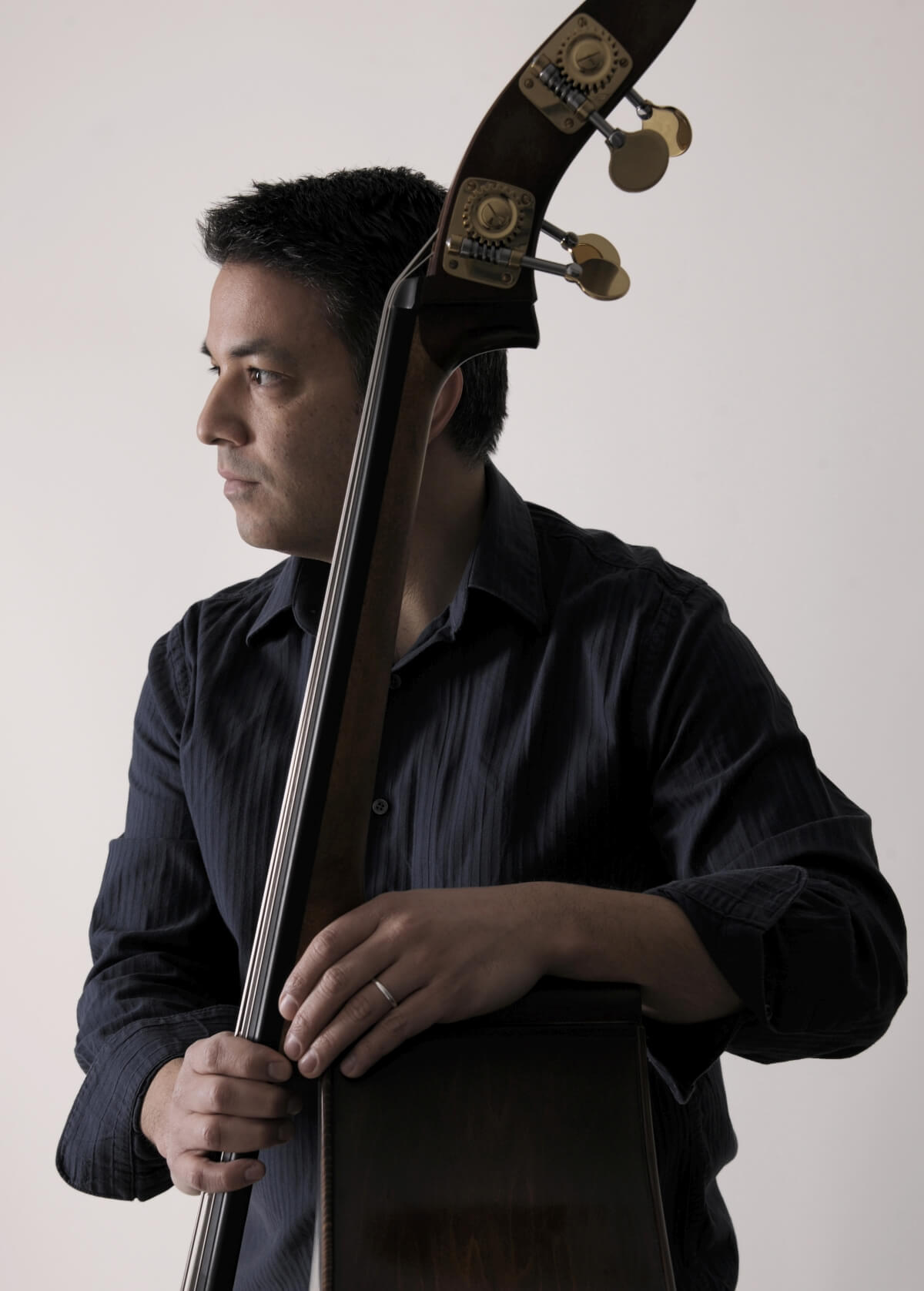
TopGuitar readers (and me personally!) are surely interested in which double bass you play. Can you tell us about your instrument?
Bob Gingery: I play a bass made by a shop in Connecticut called Upton Bass. It’s not a fancy instrument but plays well and sounds great to me. I used to have an old German bass that sounded beautiful but was rather big and not the easiest playing bass. It also didn’t amplify that well. If you are playing solo classical bass in a large concert hall a $20000 instrument might make sense but a lot of the subtleties of a fine instrument get lost when drums and guitar amps get involved. I’ve heard bassists talk about how the bass they play is not that special, that the sound is in the hands, as long as the instrument is good enough the sound will come out, and I agree with that. It is important though to have a well set up bass and to think about string choice and amplification as that ends up as part of the sound. For the bass gear heads out there (like me): I play Spirocore Mittel E, Weich A and D strings with an Obligato G and use a Fishman Full Circle pickup. When I use my own gear I use either an Acoustic Image Clarus SL or TC Electronic Bam200 amp into cabinets from Bergantino, Acoustic Image or Mike Arnopol Soundworks.
Personally – I do love double bass solos very much and it is very important to me whether the solo is played with an accompanying instrument or not. Tell us, what does it look like from your perspective?
Bob Gingery: A well-placed melodic bass solo is great, but it’s not why I play bass. It’s fun to listen to a virtuosic bass player who puts the bass out front as lead instrument in place of a horn or guitar. I’m amazed at what some of these guys do but those bass-centric albums never have staying power on my playlists. I’m much more interested in group interaction. That usually means a more traditional role for the bass as part of rhythm section, creating a groove while also allowing some freedom in the bass part. That being said, I love to take a bass solo when it’s called for. In the right place it can be great. I love the sound of the bass and the big deep growly notes when played melodically can be beautiful. When I practice, I’m always working on at least one transcription of a solo that I can learn from.
In addition to numerous projects in which you contribute as a sideman, you also run your own band with which you have already released your second album for Fresh Sound New Talent Records. Apart from your original compositions, there are also songs by Thelonious Monk or … Pink Floyd (!). Can you tell us a bit more about „Kittyhawk”?
Bob Gingery: I feel like I learned a lot from my first record and that shaped „Kittyhawk” in a positive way. While my writing is definitely jazz at the core, I’ve always tried to incorporate everything else that’s influenced me and I think you hear a lot of that in this record. Jon Irabagon, Mike Baggetta and Jeff Hirshfield did a great job of interpreting my tunes and bringing a sense of freedom to the music. It was great to have Jordi Pujol at Fresh Sound behind those records too. Besides the logistical support, just to know that someone that listens to so much new music believes in your stuff helps a lot. It’s really amazing that someone will help a relatively unknown jazz artist get off the ground. We need more of that.
Can you talk a bit more about your own compositions? Where do you find inspiration when you write music?
Bob Gingery: I’ve always been interested in the blending of different styles. I hesitate to use the word fusion because of the connotations of that word in the world of jazz, but it is a good description of what I like and what I try to incorporate in my writing. The tricky part for me has always been finding the right balance. I don’t want to write a tune that sounds too bebop or too rock or Latin. I feel like there’s so many great tunes already out there in these styles so why bother? There needs to be a reason for a song I write to exist, at least to me. I have to feel like there’s something new in it, even if that’s just a small idea, a small part of the tune. I know a lot of great music is inspired by a place, event, feeling or idea, what you might call programmatic music. I never write that way, it’s all absolute music for me, just the sound and how that makes you feel. Sometimes after a tune is written it will remind me of something and that will inspire a title. That’s not to say that my music isn’t influenced by what I listen to. I’ve attempted to write tunes in the style of composers that I admire. I love Kenny Wheeler’s unique take on harmony, John Scofield’s incorporation of blues and funk into modern jazz, Dave Holland’s approach to rhythm. Ben Wendel’s music is pretty amazing, there’s so much great music out there. I’m interested in small group acoustic jazz, but I try to bring other elements to it, things I’ve learned from playing so many different kinds of music over the years.
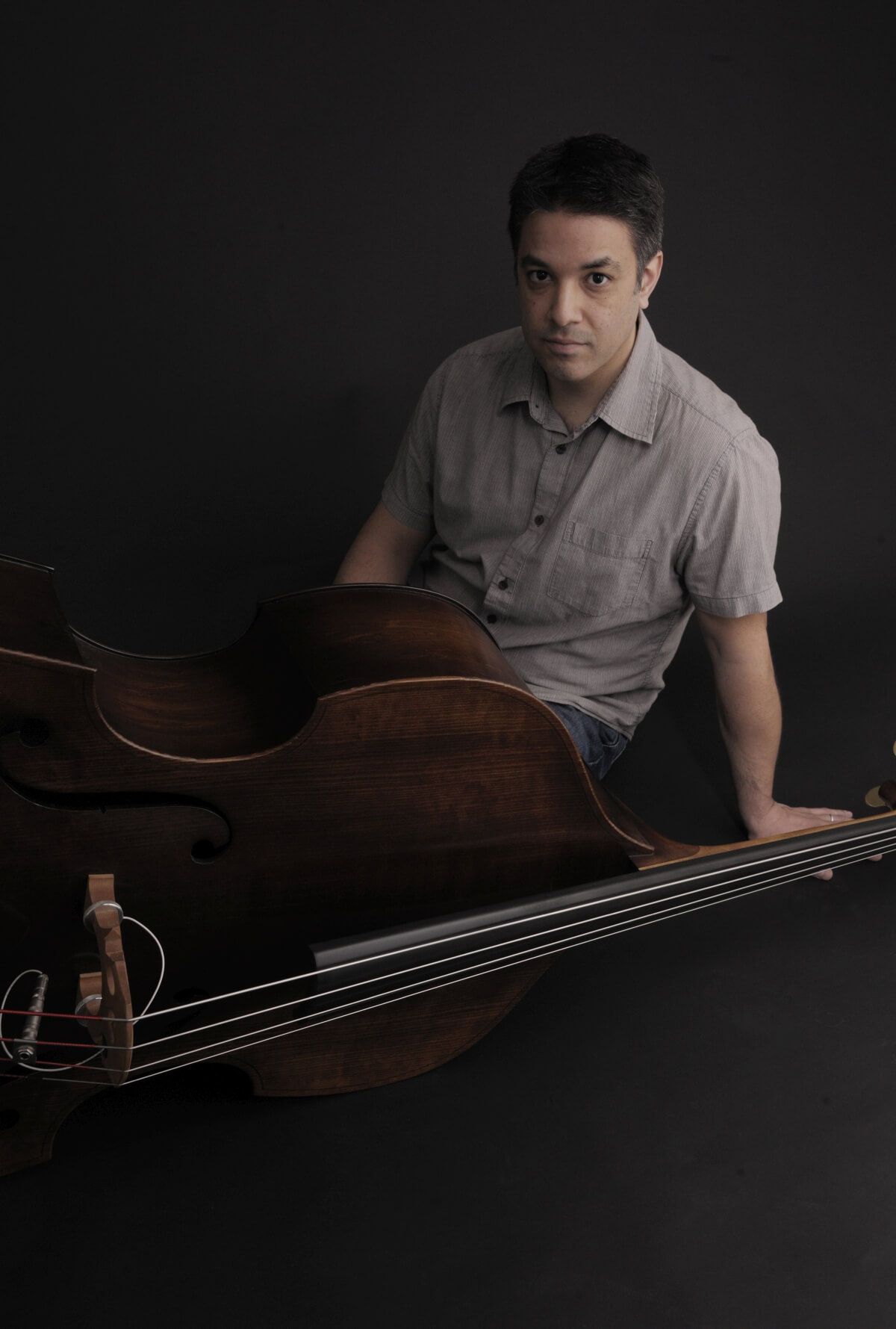
You hold undergraduate degrees in music from Berklee College of Music and California State University, Chico and a masters degree in music from the City College of New York where you studied with Ron Carter, John Patitucci, and Geri Allen. Am I right that the Berklee College of Music was the place where you met Takeshi Asai for the very first time?
Bob Gingery: A drummer friend hired Takeshi and I for some gigs while we were at Berklee. That’s where we first met. We played together while at Berklee and then lost touch when I moved to New York. A few years later Takeshi called me to play a trio gig at a club called B Flat in Tribecca. That turned into a regular gig. It was a great place to work on tunes. We could play what we wanted and the crowd came to listen (mostly). We got to work on a lot of Takeshi’s music. Brian Woodruff and I both lived in Queens and knew each other from sessions there. I introduced them and Brian started doing the B Flat gig. That became the trio on Takeshi’s new record. Unfortunately, B Flat hasn’t had live music since Covid. Hopefully again soon.
Now, when you moved to NY, you also became the neighbours. Do you often happen to play with Takeshi? What can you tell about him as a composer, pianist and… simply, as a friend?
Bob Gingery: Takeshi always plays with a lot of passion and energy. He really puts it all out there when he performs. Coincidentally, we moved to the same neighborhood a few years ago. It’s been easy to get together and work on his music. He’s a great guy, a hard worker and friend of the family. He holds concerts at his studio and my daughter has performed there. He’s also a gardener and chef, check out his Facebook page.
What do you think about these composition? Did you like them? Do you have any favourite one?
Bob Gingery: Takeshi’s compositions are very interesting. There’s never any formula. Every tune is really unique. His tune Bacon is short, just 4 bars, kinda funky, and a vamp, but it was a blast to play. Then there is Yonder which has a long winding form. I think my favorite as Ave Marta which was really challenging with changing time signatures throughout. Takeshi said he took harmonic ideas from Shubert, it’s really beautiful. I haven’t heard any of the recordings yet, but I really look forward to hearing them.
What are your plans / dreams or expectations? What can we wish you?
I’ve been writing more lately and hope to record another album of my own music soon. I want to continue to grow as a musician. It’s never ending, that’s what’s great. There’s always something new to learn that you can use.\
The interview was conducted by Marta Ratajczak

